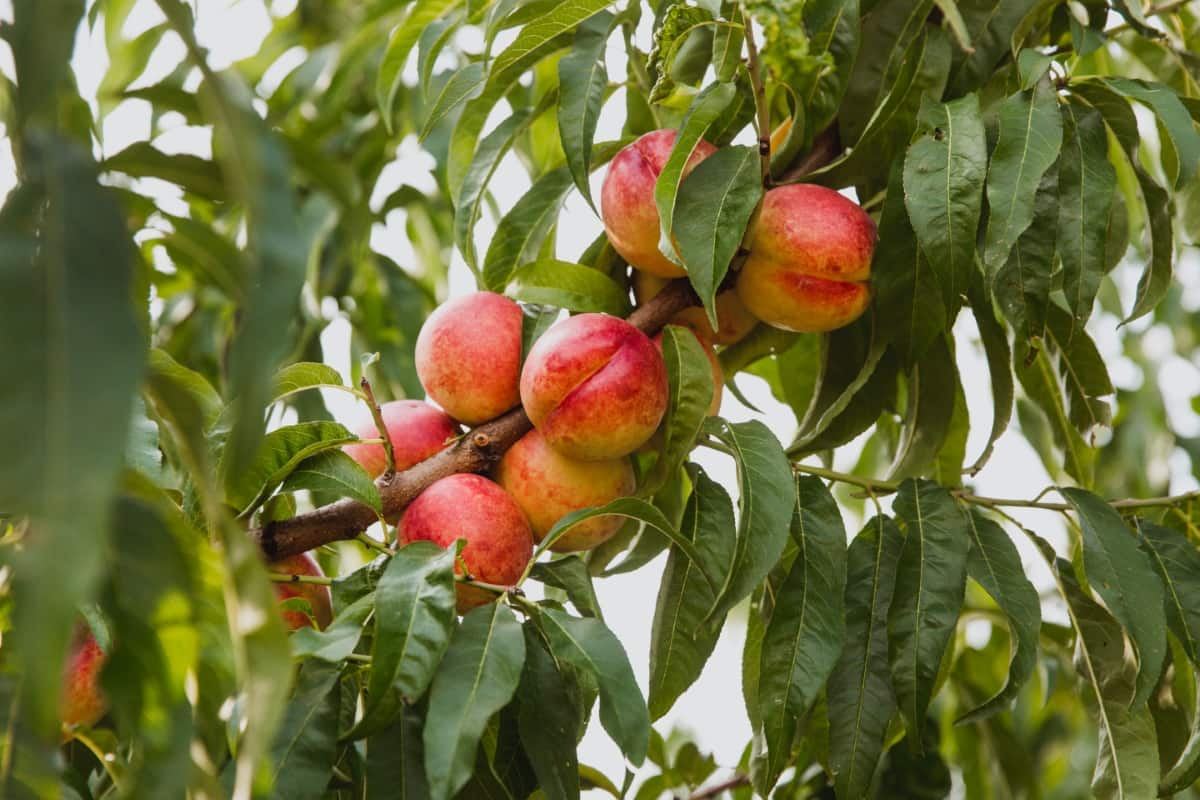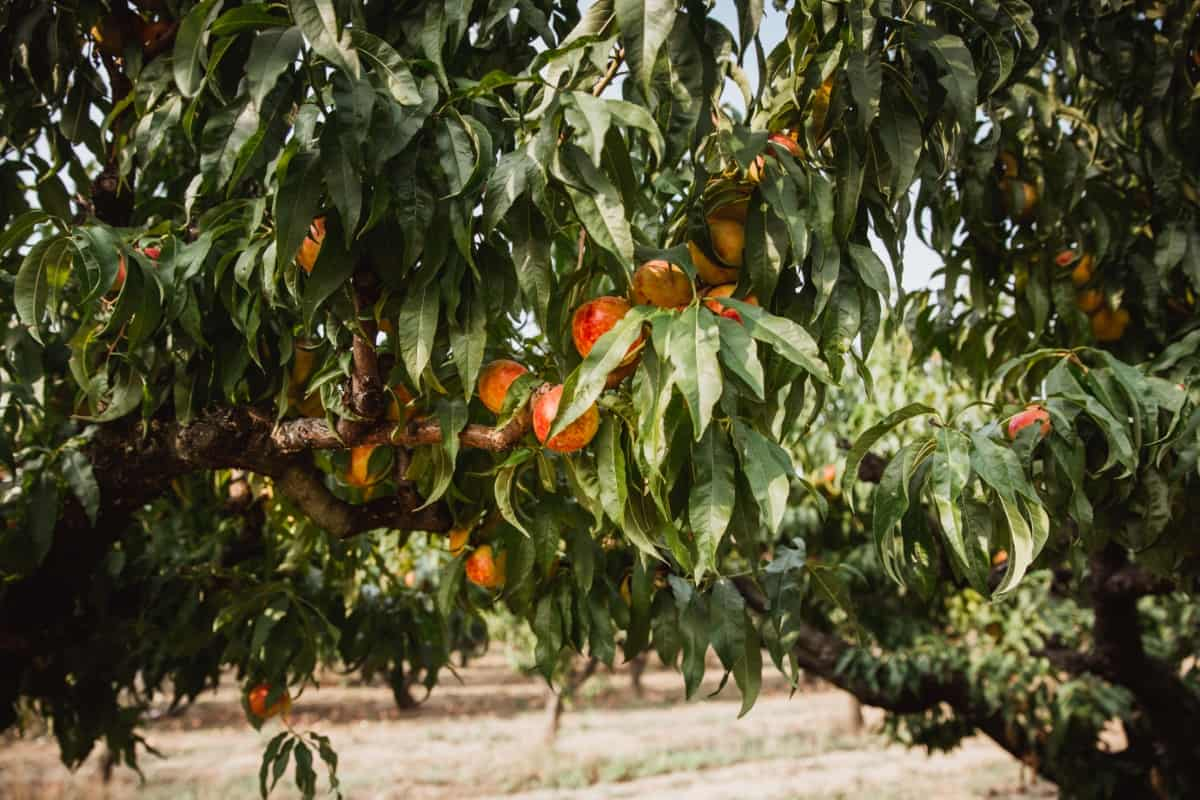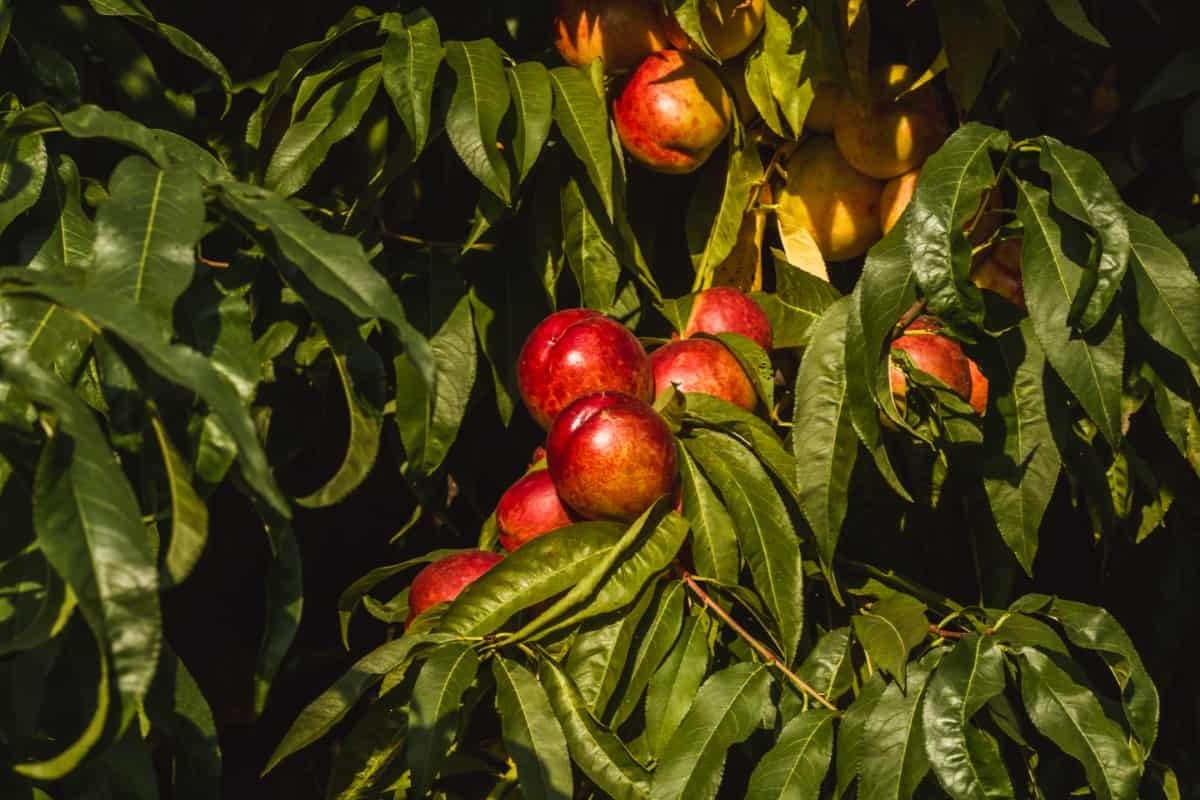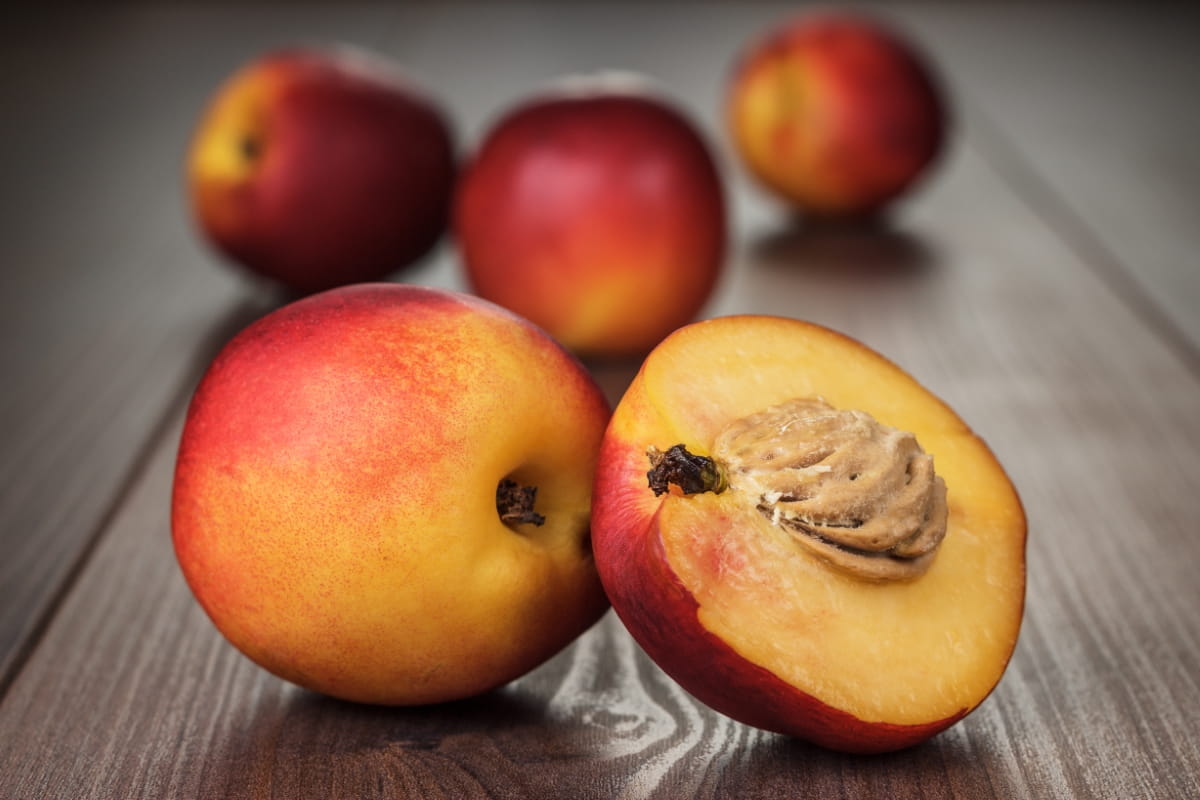Preventing Nectarine Cracking is crucial for ensuring the growth of split-free, high-quality fruits. Understanding the Causes of nectarine splitting and implementing effective strategies such as optimal irrigation, nutrient management, and pruning techniques are essential for successful nectarine cultivation. In this blog, we’ll explore various methods to grow nectarines without cracking.

How to Prevent Nectarine Cracking
Introduction to Nectarine Cracking
Nectarine cracking, also known as fruit splitting, is a prevalent concern for growers worldwide. This phenomenon occurs when the skin of the nectarine fruit ruptures, exposing the flesh beneath. While not harmful to the tree itself, cracking significantly reduces the market value of the fruit and can lead to increased susceptibility to pests and diseases.
Understanding the Phenomenon
Nectarine cracking typically occurs when there is an imbalance in moisture levels within the fruit. During periods of rapid growth or environmental stress, such as fluctuations in temperature or excessive rainfall, the fruit may absorb water faster than it can expand, leading to internal pressure buildup and eventual cracking of the skin. Understanding the underlying mechanisms behind this process is essential for developing effective prevention strategies.
Impact on Fruit Quality and Orchard Yield
The presence of cracked nectarines negatively impacts both fruit quality and orchard yield. Cracked fruits are often deemed unsuitable for sale in fresh markets, resulting in financial losses for growers. Additionally, damaged fruits are more susceptible to rot and fungal infections, further reducing overall yield and profitability.
Causes of Nectarine Cracking
Several factors contribute to the occurrence of nectarine cracking, including environmental conditions, genetic predisposition, and cultural practices. Identifying and addressing these underlying causes is important for implementing effective preventive measures.
Environmental Factors and Their Effects
Environmental factors such as precipitation, moisture level, and temperature fluctuations play a significant role in nectarine cracking. Excessive moisture, particularly during periods of rapid fruit growth, can overwhelm the fruit’s capacity to expand, leading to internal pressure and subsequent cracking of the skin. Similarly, extreme temperature variations can disrupt the fruit’s physiological processes, further increasing the risk of cracking.
Genetic Susceptibility in Different Varieties
Certain nectarine varieties exhibit a higher susceptibility to cracking due to genetic predispositions. Factors such as thin skin or rapid fruit expansion can increase the likelihood of cracking, especially under adverse environmental conditions. Growers should consider selecting cultivars with greater resistance to cracking to minimize losses.
Water Management Strategies
Optimal water management is essential for preventing nectarine cracking. By ensuring consistent moisture levels in the soil and minimizing fluctuations in irrigation, growers can help maintain turgor pressure within the fruit, reducing the risk of cracking. Implementing efficient irrigation systems and scheduling water applications based on plant needs can significantly contribute to successful prevention efforts.
Optimizing Irrigation for Consistent Moisture
Developing an irrigation schedule tailored to the specific needs of nectarine trees is crucial for preventing cracking. By monitoring soil moisture levels and Adapting irrigation practices accordingly, growers can ensure that trees receive adequate water without excess. This helps maintain consistent moisture levels throughout the growing season, reducing the risk of cracking.
Techniques to Avoid Water Stress and Splitting
To minimize water stress and prevent splitting, growers can employ various techniques such as mulching, which helps retain soil moisture and regulate temperature, and drip irrigation systems, which supply water directly to the root zone, reducing evaporation and runoff. Additionally, practicing proper pruning and thinning techniques can promote airflow and reduce water competition among fruits, further supporting prevention efforts.
Nutrient Management
Balanced nutrition is essential for nectarine trees to develop strong, resilient fruit. Deficiencies in essential nutrients, such as potassium, calcium, and boron, can weaken the fruit’s skin, making it more susceptible to cracking. Implementing a comprehensive nutrient management plan that includes soil testing, targeted fertilization, and organic amendments can help address deficiencies and support overall fruit health.
Essential Nutrients to Prevent Cracking
Potassium plays a pivotal role in regulating water uptake and maintaining turgor pressure within the fruit, making it essential for preventing cracking. Similarly, adequate calcium levels contribute to cell wall strength and integrity, reducing the risk of skin rupture. Boron is also important for fruit development, as it helps regulate carbohydrate metabolism and cell elongation.
Fertilization Schedules Tailored for Nectarines
Developing a fertilization schedule tailored to the specific nutrient requirements of nectarine trees is essential for preventing cracking. By timing nutrient applications to coincide with critical growth stages, growers can ensure that trees have access to essential nutrients when they need them most. Regular soil testing helps identify deficiencies and allows for targeted fertilization, maximizing effectiveness and minimizing waste.
In case you missed it: How to Control Cyclamen Mites: Best Solutions to Treat and Get Rid of Cyclamen Mites

Soil Health and Maintenance
Maintaining soil health is vital for preventing nectarine cracking and supporting overall tree vigor. Healthy soils provide a stable growing environment with good drainage and aeration, promoting robust root development and nutrient uptake. Regular soil testing, organic amendments, and proper irrigation and drainage practices are essential components of effective soil health management.
Improving Drainage and Aeration
Poor soil drainage can exacerbate nectarine cracking by creating waterlogged conditions that stress the fruit. Improving soil structure and implementing drainage systems, such as tile drains or raised beds, can help prevent water accumulation around the root zone, reducing the risk of cracking. Similarly, promoting adequate soil aeration through practices such as regular cultivation or the addition of organic matter can further support prevention efforts.
The Role of Organic Matter in Soil Structure
Organic matter improves soil structure by enhancing water and nutrient retention, reducing compaction, and promoting aeration. It provides essential nutrients for nectarine tree health and maintenance, fostering robust growth and fruit development. Additionally, organic matter supports beneficial microbial activity in the soil, further enhancing soil fertility.
Pruning and Canopy Management
Pruning and canopy management are essential practices for maintaining nectarine tree health and improving fruit quality. Proper pruning helps regulate tree growth, opens up the canopy for better light penetration and air circulation, and removes diseased or damaged branches. This promotes fruit development and reduces the risk of pests and diseases.
Pruning Techniques for Healthy Growth
Pruning techniques for healthy growth include.
- Removing dead or diseased branches.
- Thinning out crowded areas of the canopy.
- Shaping the tree to encourage balanced growth. It’s important to prune during the tree’s dormant season to minimize stress and promote vigorous regrowth in the spring.
Managing Canopy for Optimal Light and Air Circulation
Managing the canopy involves selectively thinning branches to allow sunlight to penetrate the inner canopy and improve air circulation. This mitigates the risk of fungal diseases and enhances fruit ripening and coloration. Regular canopy management promotes overall tree health and productivity.
Fruit Thinning Practices
Fruit thinning is the method of removing excess fruit from the tree to promote larger, higher-quality fruit and reduce stress on the tree. It helps prevent branches from breaking under the weight of too many fruits and ensures that the remaining fruit receives an adequate supply of nutrients.
Benefits of Thinning for Fruit Size and Quality
Thinning fruits allows the tree to allocate more resources to the remaining fruit, resulting in larger, sweeter, and more flavorful nectarines. Thinning also helps prevent overcrowding, which can lead to sunburn, disease, and uneven ripening. Overall, thinning improves fruit size, quality, and marketability.
Methods to Reduce Overcrowding and Stress
Reducing overcrowding and stress on nectarine trees involves proper spacing during planting, regular pruning to maintain an open canopy, and thinning out excess fruit. These practices help optimize light penetration, air circulation, and nutrient distribution, promoting healthier trees and higher-quality fruit.
In case you missed it: How to Get Rid of Darkling Beetles: Control Management of Darkling Beetles

Use of Growth Regulators
Growth regulators can be used to manage tree growth, improve fruit sets, and reduce the incidence of cracking. These chemicals mimic naturally occurring plant hormones, helping to regulate growth and development. Proper application timing and dosage are essential for effective results without negative impacts on tree health.
How Growth Regulators Can Minimize Cracking
Growth regulators can minimize cracking by promoting more uniform fruit development and strengthening the fruit’s skin. They are Gibberellins, auxins, and cytokinins. These can also help regulate water uptake by the fruit, reducing the risk of rapid expansion and cracking. However, it’s important to use growth regulators according to label instructions to avoid adverse effects.
Application Timing and Best Practices
Timing is crucial when applying growth regulators to nectarine trees. Applications should be made during key growth stages, such as bloom or early fruit development, to maximize effectiveness. It’s also crucial to follow recommended application rates and methods to ensure proper absorption and minimize environmental impact.
Integrated Pest and Disease Management
Integrated pest and disease management involves combining cultural, biological, and chemical control methods to reduce pest and disease damage while reducing reliance on pesticides. This holistic approach considers the ecosystem as a whole and aims to maintain natural balance and biodiversity in the orchard.
Identifying Pests and Diseases That Weaken Fruit
Common pests and diseases that weaken nectarine fruit include aphids, mites, fungal pathogens like brown rot and powdery mildew, and bacterial diseases such as bacterial spot. Regular monitoring and proper identification are essential for implementing effective control measures and preventing damage to the crop.
Strategies for Control and Prevention
Control and prevention strategies for pests and diseases include cultural practices like sanitation and pruning, biological controls such as beneficial insects and microbial agents, and targeted pesticide applications when necessary. Integrated pest management programs aim to minimize chemical inputs while effectively managing pest populations.
Harvesting and Post-Harvest Handling
Harvesting nectarines at the optimal ripeness stage and handling them carefully to minimize bruising and damage are crucial for maintaining fruit integrity and quality. Proper post-harvest handling, including cleaning, sorting, and storage, helps prolong shelf life and ensures a high-quality product for consumers.
Timing Harvest to Reduce Incidence of Cracking
Harvesting nectarines at the right time can help reduce the incidence of cracking. Fruit should be picked when fully ripe but still firm to avoid overripening and susceptibility to cracking. Harvesting during cooler periods of the day can also minimize stress on the fruit and reduce the risk of cracking.
Post-Harvest Techniques to Maintain Fruit Integrity
After harvest, nectarines should be handled gently to avoid bruising and damage to the skin. Proper cleaning and sorting techniques help remove any surface contaminants and ensure uniformity in appearance. Storage under controlled conditions, such as low temperatures and high humidity, can prolong shelf life and maintain fruit quality.
In case you missed it: Everything About Using Sticky Trap Pest Control

Conclusion
Preventing Nectarine Cracking requires a comprehensive approach that addresses irrigation, nutrient management, pruning, and pest control. By implementing proper canopy management practices, thinning fruit techniques, and post-harvest care, growers can reduce stress on nectarine trees and improve fruit quality. Genetic research may also provide insights into developing nectarine varieties resistant to cracking, ensuring sustainable production and healthy nectarine trees.
- Deworming Schedule for Dogs/Puppies: A Beginners Guide
- How to Prevent and Control Parasites in Goats
- Beneficial Insects in Pest Management
- Natural Solutions for Pest Control in Flower Gardens
- Types of Fungicides Used in Agriculture
- Common Issues in the Fruit Development Stage of Pomegranate Farming
- Fruit Development Issues in Papaya: Easy Solutions and Treatment
- Soil-Borne Diseases and How to Protect Your Plants
- Practices to Prevent Disease Spread in the Garden